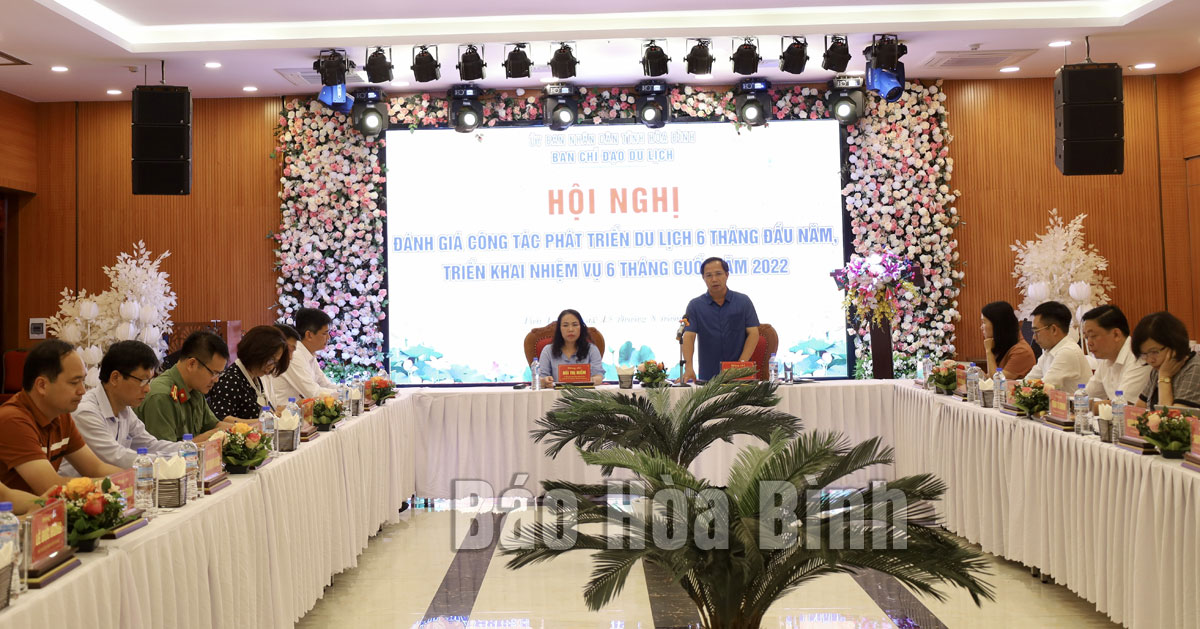



Mr. Nguyen Van Toan, the Vice Chairman of the Provincial People's Committee delivered a conclusion speech at the conference.
In the first 6 months of the year, the tourism sector has achieved the positive results of the Plan No. 65/KH-BCD, dated on March 4, 2022 on tourism development in Hoa Binh province. Many activities stimulating tourism demand, promoting tourism, developing products that attract tourists, prioritizing the resources to invest in tourism development, especially the tourism infrastructure, preserving culture associated with tourism development. The whole province has welcomed over 1,832,600 turns of visitors, reaching 71% of the year plan, including over 55,000 turns of international visitors. Total revenue from tourism is about 1,980 billion VND, increasing 124.5% comparing to that of he same period, reaching 82.5% of the year plan.
Regarding a number of difficulties and obstacles in the tourism development of the province, the delegates of the districts and the city had a number of proposals and recommendations; The appropriate departments and branches exchanged and explained the issues raised by the members of the Board of Directors.
Making a conclusion speech, Mr. Nguyen Van Toan, the Vice Chairman of the Provincial People's Committee requested the the appropriate authorities, branches, localities and units improve the initiative, responsibility, and effectively perform the tasks of the Resolution, Planning, Program, Scheme and Tourism development plan of the province. It is necesary to implement the investment promotion, trade and tourism in the province in the period of 2021-2025. It is also necessary to form and develop tourism products in the direction of increasing competitiveness, enhancing professionalism, civilization, friendliness imbued with the cultural identity. The districts and the city have set up the working groups to support the businesses in the site clearance, attracting investment in tourism, strengthening the propaganda on the mass media, the social networks and organizing the events to introduce and promote tourism...